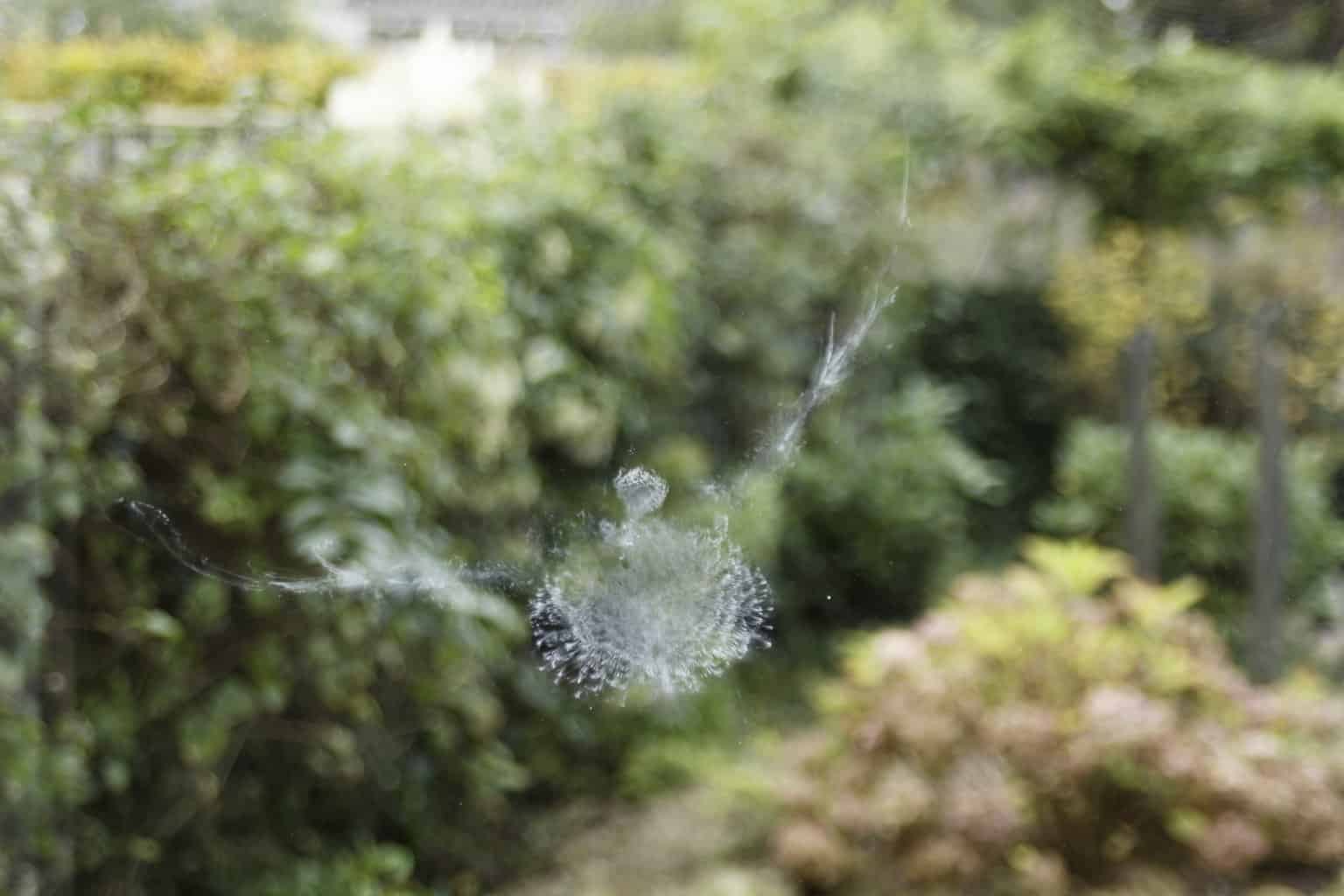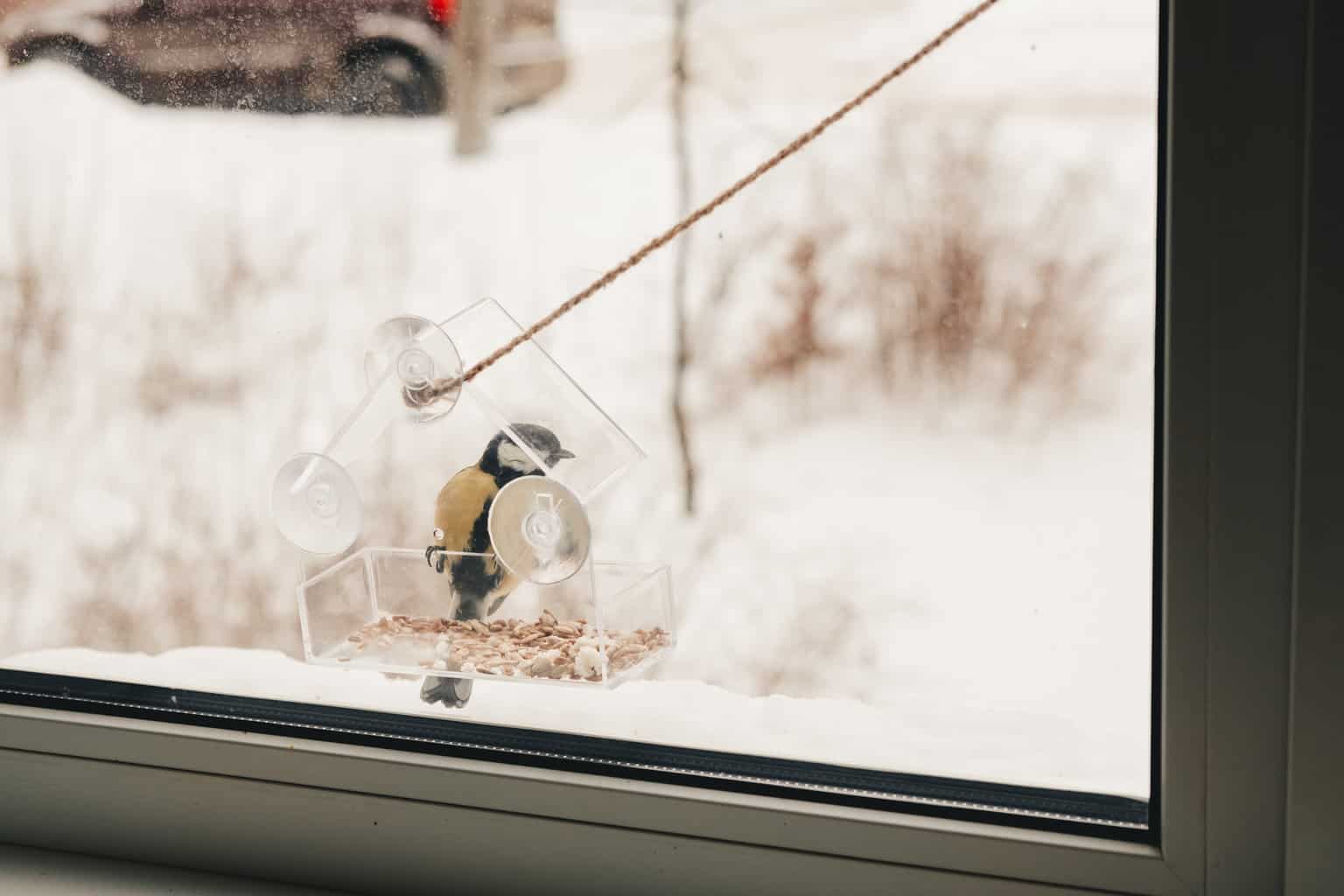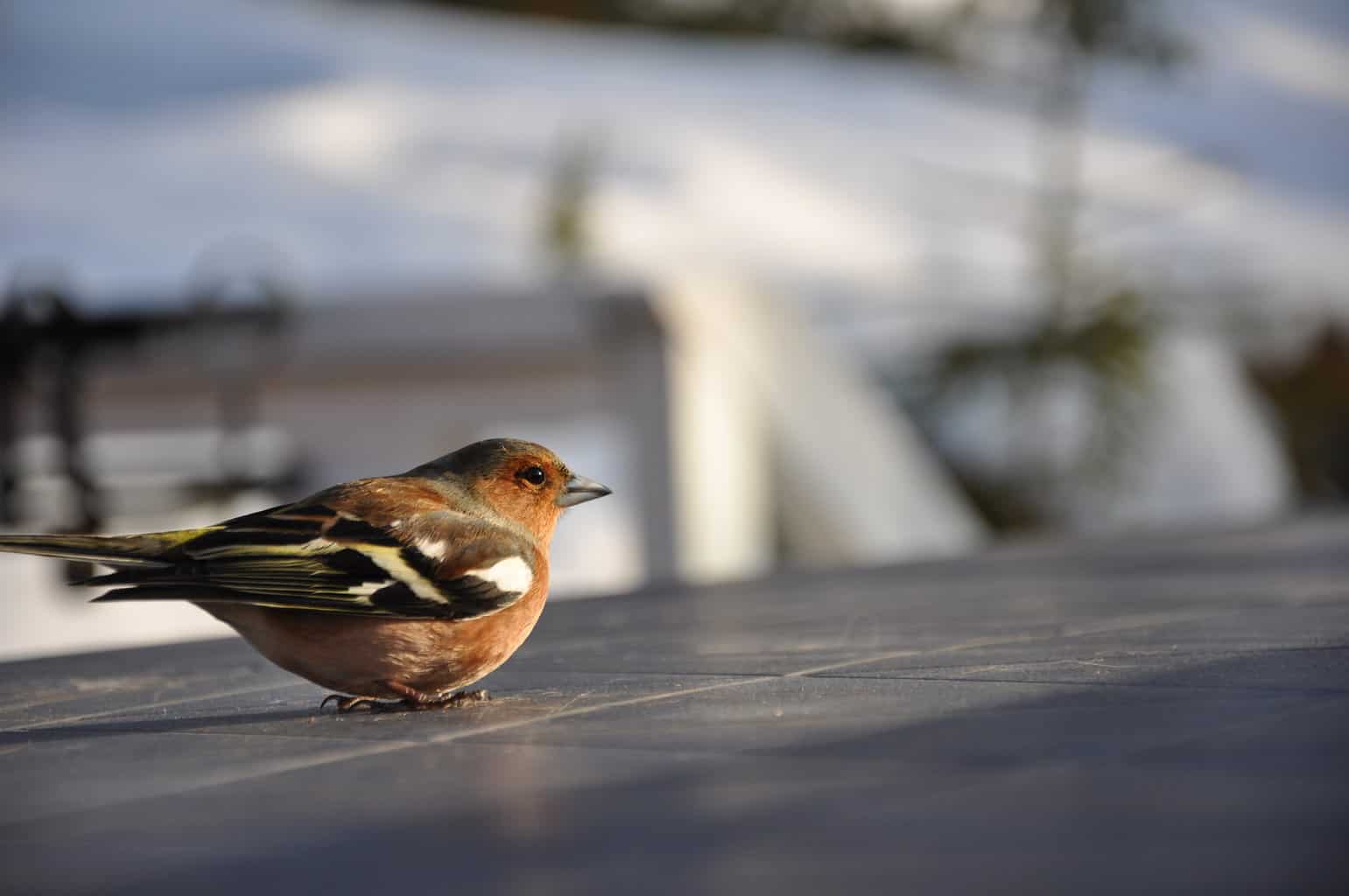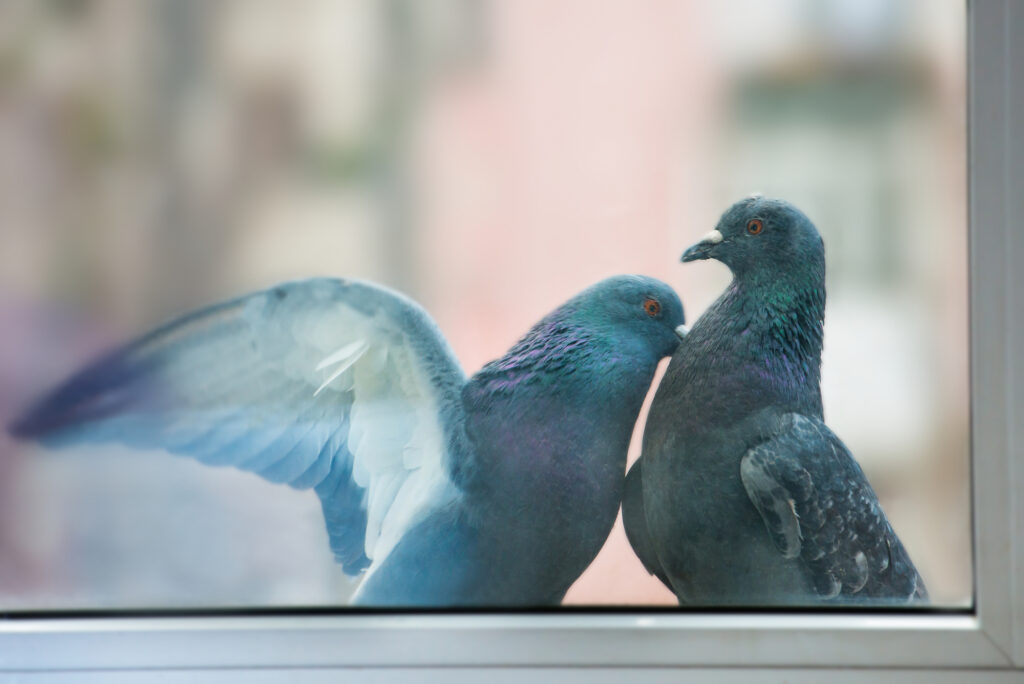Collisions with buildings kill nearly 600 million estimated birds per year. While we can’t prevent all these deaths, we can each do our part to reduce bird collisions on our property.
The U.S. Fish and Wildlife Service estimates that about 599 million birds are killed by collisions with building glass, second only to cats when it comes to the greatest deadly threats to birds.
So, what can you do to stop birds from hitting your windows?
Identify Problem Windows
Birds big and small often have a hard time distinguishing between what is a window and what is not. With this in mind, the first thing you should do to bird-proof your windows is to walk outside and take a good look at them.

If you can’t see anything inside but reflections of trees and the rest of the outdoors, the birds won’t be able to either. Focus on making these priority windows safer for the birds in your yard.
Even interior plants can look like outdoor plants when that’s all birds can see from outside, so plants placed near windows typically aren’t a great deterrent.
Treat Your Windows
The first thing you can do to help make those windows safer is to move interior plants away from the window. The second thing is to put something on your windows to deter birds from flying into them.
This can be tape, stickers, sticky notes, or other decals organized in a grid pattern on the exterior surface of a window.
To stop birds from hitting your windows, you need to put something across almost the entire surface of the window. A single decal typically won’t be an effective solution, unfortunately.
According to the Cornell Lab of Ornithology, vertical window markers need to be placed four inches apart or less and horizontal markings need to be two inches apart or less.
Some people may consider so many decals to be somewhat aesthetically unpleasing, so there are other options.
Mosquito screens installed on the outside of windows are one way to reduce bird collisions, for example.
Another option that doesn’t reduce your visibility through your windows is a two-way film that changes how birds see your windows but doesn’t impact your interior view.
CollidEscape is one company that makes window films to change birds’ views of your windows while keeping your view as normal as possible.
Adjust Feeder Position to Windows
You can reduce bird collisions by moving your bird feeders and bird baths closer to your windows. It seems counter-intuitive, but research has shown that moving your feeders within a meter of your windows can reduce collisions.

One study found a “marked increase” in fatalities when bird feeders were placed between five and 10 feet from windows.
Turn off Lights at Night During Migration Periods
Turning off lights at night during peak migration periods in spring and fall is also very important.
Migrating wild birds often become disoriented by artificial building light, wasting energy and sometimes colliding with buildings. Turning off your indoor and outdoor lighting at night is one way you can help birds as they move through your area.
The biggest problems are usually not with single households or apartments like yours, however. It’s with all the artificial light that comes from major cities at night.
Many local groups support local lights-out initiatives to reduce nighttime light use in America’s biggest cities. To learn about programs near you and get involved, click here.
What Should I Do if a Bird Hits My Window?
If a bird hits your window and is still alive, the National Audubon Society recommends taking the bird to a licensed wildlife rehabilitator.
Birds that hit windows will often be concussed or have pelvic injuries such as broken bones, the organization says, and the average person isn’t properly equipped to nurse birds back to health from these ailments.

The Audubon Society recommends grabbing the bird with clean hands and placing it in a shoebox or paper bag without any holes in it to transport it.
If you can’t get to a wildlife rehabber, bring the bird in the box or bag into a safe place away from predators such as your garage or home.
The bird will be ready for release if you hear it start moving around inside. It won’t necessarily be fully recovered, but it’s the best you can do without involving a professional.
The Audubon Society also cautions against interacting with the bird as much as possible, as it can add more stress for the bird. Don’t force it to eat or drink, or hold it constantly.
Frequently Asked Questions
Is It Common for Birds To Hit Windows?
Up to a billion birds die hitting windows in the United States every year, according to the American Bird Conservancy. Nearly 50 percent of these collisions are with home windows.
There are roughly 140 million homes across the United States, according to the most recent census data. Assuming there are a billion bird deaths per year, the average U.S. home sees between three and four bird collision deaths per year.
The U.S. Fish and Wildlife Service’s median estimate is about 600 million bird deaths due to collisions with buildings per year, which would mean closer to two bird deaths per year for the average home.
You can reduce the number of birds hitting your windows by taking simple preventative measures like moving interior plants away from your windows, repositioning your feeders, and installing window decals, screens, or two-way film.
Do Birds Die When They Hit Windows?
Birds that collide with windows often die, either on the spot or after flying away from injuries such as internal bleeding.
Portland Audubon says that between 54 and 76 percent of window collisions are fatal.
Do Curtains Help Stop Birds From Hitting Your Windows?
Curtains can help limit the number of birds hitting your windows somewhat, as long as they’re drawn.
It’s not realistic to expect people to have their shades or curtains drawn 24/7, however. This is why additional measures are important, such as screens or window decals.

